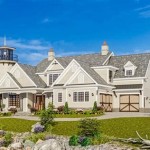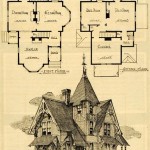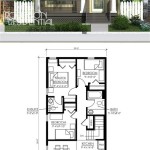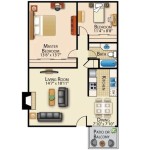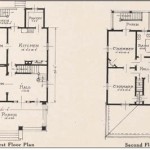Diy Bird Houses Plans involve the creation of structures that provide shelter and nesting sites for birds. These plans offer detailed instructions and materials lists, enabling individuals to construct bird houses independently.
Building bird houses is a rewarding hobby that supports wildlife conservation efforts. Whether you’re an experienced woodworker or a beginner looking to engage in a hands-on project, DIY bird house plans empower you to create unique and functional homes for feathered friends.
Moving into the main body of this article, we will delve into the specific steps involved in creating DIY bird houses, covering aspects such as materials selection, design considerations, and techniques for ensuring the safety and durability of these avian abodes.
Here are 8 crucial considerations for DIY bird house plans:
- Appropriate size
- Ventilation holes
- Drainage holes
- Predator guards
- Durable materials
- Non-toxic finishes
- Easy cleaning
- Aesthetic appeal
Adhering to these guidelines ensures that your DIY bird houses provide a safe, comfortable, and attractive shelter for avian visitors.
Appropriate size
The size of your DIY bird house is crucial for attracting the desired species and ensuring their comfort and safety. Different bird species have varying size preferences, so it’s essential to research the specific birds you want to attract before finalizing your design.
- Small birds (e.g., chickadees, wrens):
Houses should have a floor space of approximately 4×4 inches and a height of 6-8 inches.
- Medium birds (e.g., bluebirds, swallows):
Houses should have a floor space of around 5×5 inches and a height of 8-10 inches.
- Large birds (e.g., woodpeckers, flickers):
Houses should have a floor space of at least 6×6 inches and a height of 10-12 inches.
- Entrance hole size:
The diameter of the entrance hole should be appropriate for the size of the bird you want to attract. As a general rule, the entrance hole should be around 1 1/8 inches for small birds, 1 1/2 inches for medium birds, and 1 3/4 inches for large birds.
Providing an appropriately sized bird house ensures that the birds have enough space to move around comfortably, build their nests, and raise their young. It also helps prevent overcrowding and competition for resources among birds.
Ventilation holes
Ventilation holes are an essential aspect of DIY bird house plans, ensuring proper air circulation and preventing moisture buildup inside the nest box. Without adequate ventilation, the bird house can become too humid, leading to respiratory issues, mold growth, and discomfort for the birds.
- Prevent overheating:
Ventilation holes allow air to circulate, preventing the bird house from becoming too hot during warm weather. This is especially important for bird species that are sensitive to heat, such as bluebirds and chickadees.
- Reduce moisture buildup:
Ventilation holes help to reduce moisture buildup inside the bird house, which can occur from the birds’ breath, droppings, and nesting materials. Excess moisture can lead to mold growth, which can be harmful to the birds’ health.
- Promote air quality:
Ventilation holes allow fresh air to enter the bird house, which helps to maintain good air quality for the birds. This is especially important for birds that spend long periods of time inside the nest box, such as during incubation and brooding.
- Prevent drafts:
While ventilation is important, it’s also essential to prevent drafts from entering the bird house. Drafts can make the birds uncomfortable and can even cause hypothermia in young birds. When designing your ventilation holes, make sure they are placed in a way that minimizes drafts.
Proper ventilation is crucial for the health and well-being of the birds that use your DIY bird house. By incorporating ventilation holes into your design, you can create a comfortable and healthy environment for your feathered friends.
Drainage holes
Drainage holes are an important consideration in DIY bird house plans, as they allow water to drain out of the nest box, preventing moisture buildup and potential health issues for the birds.
- Prevent waterlogging:
Drainage holes allow excess water to drain out of the bird house, preventing the nest from becoming waterlogged. This is especially important during heavy rains or snowmelt, when water can accumulate inside the bird house.
- Reduce mold growth:
Excess moisture inside the bird house can lead to mold growth, which can be harmful to the birds’ health. Drainage holes help to reduce moisture buildup, creating a less hospitable environment for mold.
- Promote egg and chick survival:
In wet conditions, waterlogged nests can lead to egg and chick mortality. Drainage holes help to prevent this by ensuring that water can drain out of the nest box, keeping the eggs and chicks dry and warm.
- Maintain nest hygiene:
Drainage holes allow droppings and other waste materials to drain out of the bird house, helping to maintain nest hygiene. This reduces the risk of disease transmission and keeps the nest environment clean and healthy for the birds.
By incorporating drainage holes into your DIY bird house plans, you can create a healthier and more comfortable environment for the birds that use it.
Predator guards
Predator guards are an important consideration in DIY bird house plans, as they help to protect the birds and their young from predators such as cats, snakes, and raccoons.
- Prevent predators from entering the nest box:
Predator guards are designed to prevent predators from entering the nest box through the entrance hole. This can be achieved by using a variety of methods, such as adding a baffle to the entrance hole, using a predator guard with a slanted perch, or installing a nest box with a built-in predator guard.
- Deter predators from climbing the bird house:
Predator guards can also be used to deter predators from climbing the bird house and reaching the nest box. This can be achieved by installing a metal or plastic predator guard around the base of the bird house, or by using a bird house with a built-in predator guard.
- Make the nest box less accessible to predators:
Predator guards can also be used to make the nest box less accessible to predators. This can be achieved by placing the bird house in a high location, away from trees and other structures that predators can use to climb. Additionally, predator guards can be used to camouflage the nest box, making it less visible to predators.
- Provide a safe haven for the birds:
By incorporating predator guards into your DIY bird house plans, you can create a safe haven for the birds that use it. Predator guards help to protect the birds and their young from predators, giving them a better chance of survival.
Predator guards are an essential aspect of DIY bird house plans, as they help to protect the birds that use them from predators. By incorporating predator guards into your design, you can create a safer and more secure environment for your feathered friends.
Durable materials
When choosing materials for your DIY bird house plans, durability is key. The bird house will be exposed to the elements, including rain, snow, sun, and wind. As such, you’ll want to use materials that can withstand these elements and last for many years.
One of the most durable materials for bird houses is cedar. Cedar is naturally resistant to rot and decay, and it can withstand even the harshest weather conditions. Other durable materials include redwood, cypress, and pine. These woods are also resistant to rot and decay, and they can last for many years with proper care.
If you’re on a budget, you can also use plywood or OSB (oriented strand board) for your bird house. However, these materials are not as durable as cedar, redwood, cypress, or pine. As such, you’ll need to take steps to protect them from the elements. You can do this by painting or staining the bird house, or by applying a weather-resistant sealant.
No matter what material you choose, make sure that it is at least 1/2 inch thick. This will help to insulate the bird house and protect it from the elements. Additionally, make sure that the wood is free of knots and cracks. Knots and cracks can weaken the wood and make it more susceptible to rot and decay.
By choosing durable materials for your DIY bird house plans, you can create a bird house that will last for many years and provide a safe and comfortable home for your feathered friends.
Non-toxic finishes
When choosing a finish for your DIY bird house, it is important to select a non-toxic option. Birds are sensitive to chemicals, and exposure to toxic fumes can cause respiratory problems, illness, or even death. Additionally, birds may ingest toxic finishes if they chew on the bird house.
- Water-based paints:
Water-based paints are a good option for DIY bird houses because they are non-toxic and easy to apply. However, it is important to make sure that the paint is completely dry before placing the bird house outside, as wet paint can be harmful to birds.
- Milk paint:
Milk paint is another non-toxic option that is safe for birds. It is made from milk protein and lime, and it is very durable. However, milk paint is more difficult to apply than water-based paint, and it requires multiple coats.
- Natural oils:
Natural oils, such as linseed oil or tung oil, can be used to protect the wood of your bird house from the elements. These oils are non-toxic and they will not harm birds. However, it is important to apply the oil in a well-ventilated area, as the fumes can be strong.
- Exterior glue:
Exterior glue can be used to seal the joints of your bird house and to prevent water from leaking in. However, it is important to make sure that the glue is non-toxic and safe for birds.
By choosing a non-toxic finish for your DIY bird house, you can create a safe and healthy home for your feathered friends.
Easy cleaning
Your DIY bird house should be easy to clean to maintain a healthy environment for the birds. Regularly cleaning the bird house will remove old nesting materials, droppings, and other debris that can attract parasites and diseases.
- Removable roof or front panel:
A removable roof or front panel makes it easy to access the inside of the bird house for cleaning. This is especially important for bird houses that are used by multiple broods of birds throughout the year.
- Smooth interior surfaces:
Smooth interior surfaces are easier to clean than rough surfaces. Avoid using rough-sawn lumber or materials with deep crevices where dirt and debris can accumulate.
- Non-porous materials:
Non-porous materials, such as plastic or metal, are easier to clean than porous materials, such as wood. If you are using wood, be sure to seal it with a non-toxic finish to make it more resistant to moisture and dirt.
- Drainage holes:
Drainage holes in the floor of the bird house allow water to drain out, which helps to keep the bird house dry and free of mold and mildew.
By incorporating these features into your DIY bird house plans, you can make it easy to clean and maintain, providing a healthier environment for the birds that use it.
Aesthetic appeal
The aesthetic appeal of your DIY bird house is important for two reasons. First, it can enhance the beauty of your yard or garden. Second, it can attract birds to your property. Birds are drawn to bird houses that are visually appealing and that blend in with their surroundings.
- Color:
The color of your bird house can have a big impact on its aesthetic appeal. Choose a color that will complement your yard or garden and that will be attractive to birds. Bright colors, such as red, yellow, and blue, are often attractive to birds. However, you may want to avoid using dark colors, such as black or brown, as these colors can absorb heat and make the bird house too hot for birds in the summer.
- Shape:
The shape of your bird house can also affect its aesthetic appeal. There are many different shapes to choose from, including traditional bird house shapes, such as the A-frame and the gable, as well as more unique shapes, such as bird houses shaped like animals or flowers. Choose a shape that you like and that will complement your yard or garden.
- Texture:
The texture of your bird house can also add to its aesthetic appeal. You can use different materials to create different textures, such as wood, metal, or plastic. You can also add decorative elements to your bird house, such as carvings or paintings.
- Placement:
The placement of your bird house can also affect its aesthetic appeal. Choose a location that is both attractive to birds and that will complement your yard or garden. You may want to place your bird house in a tree, on a fence post, or on a shepherd’s hook.
By considering the aesthetic appeal of your DIY bird house, you can create a bird house that is both beautiful and functional.










Related Posts

